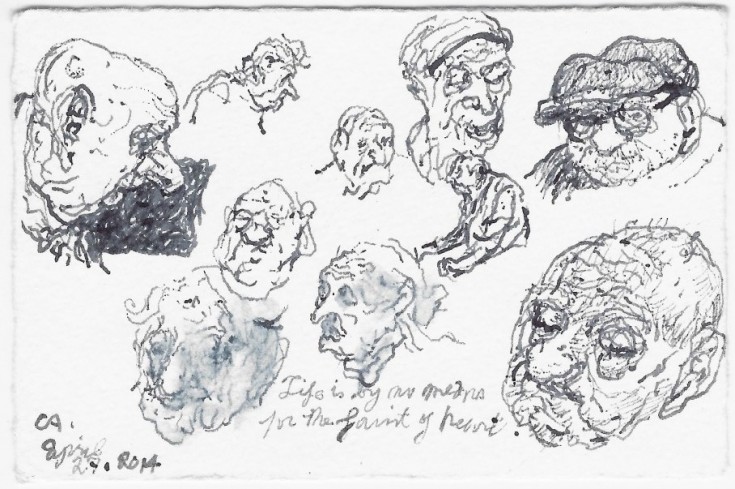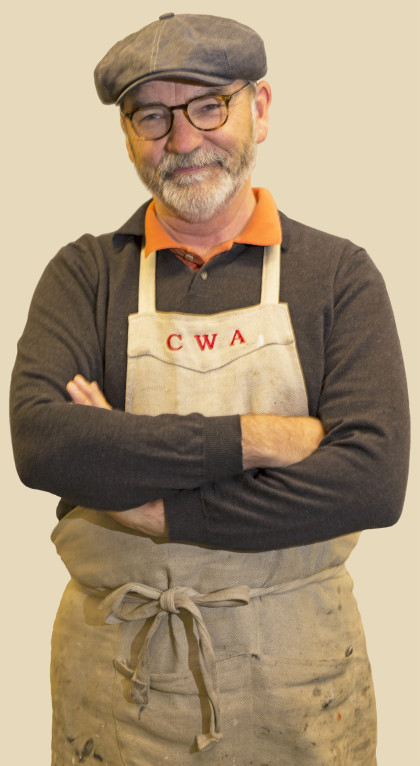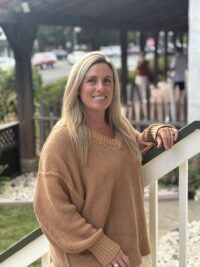I hear you were raised in Germany. Is that true?
Yes, my family moved to Munich, Germany when I was five, and I went to school and lived there until I was 15. Honestly, it gave me a European sensibility; I had great teachers, took music and art lessons. And my father was a thoughtful man. When I returned to America it was with fresh eyes.
And before Sonoma, where did you live?
My wife and I were settled in Marin, but our house was very small and our family was growing. I began as a city guy, but we steadily moved further away from an urban environment. First Marin, and then Sonoma, which when we arrived (in 1992) was actually affordable, and here we raised our family.
You’ve been called a Narrative Artist. What exactly does that mean?
I feel that term is a misnomer. When it comes to painting everything is in some sense narrative. All images of all types contain some sort of story, but often that story has to be discovered in the experience of each viewer. The potential for that is in material which evokes experiences of intensity and captivation.
What’s your history as an artist?
Well, actually, it began when education became my friend, when I discovered poetry and the use of symbol and metaphor. The experience of a creative force which eludes verbal description was my beginning. I worked in animation for a while in the 70s, but it felt too planned and linear. It’s the magic in unpredictable creativity which is my greatest pleasure.
Can you make a living as an artist?
As an artist and college professor, yes. My painting prices go up and down but I’ve taught at Sonoma State, the San Francisco Art Institute and the College of Marin. Early on, I also supported myself making newspaper deliveries of the Chronicle in Marin for twenty years. I’d be done by 6am and had all day to paint. By now, I’ve been teaching for 25 years.
And what do you see in today’s students?
There are a lot of members of the younger generation who are longing to fill a sense of emptiness with meaning. Just as cooking and other activities have seen a resurgence of interest, so have the hands-on forms of art. I think the urge represents a moral dimension beyond making money, an experience of genuineness and the joys of an unquantified world of imagination.
And what’s your greatest challenge? Is there value in art?
Being forced to create Student Learning Outcome reports. It’s a state requirement, but when it comes to art, it’s impossible. There’s an administrative propensity to cut college art department budgets. There are two primary human activities: ideas and administration. They are both necessary, but sometimes, they come into conflict.
Any plans to retire?
Sounds interesting, but I take great enjoyment in working with people who want to reconnect with the creative impulse that’s often been cut off for them early in life. It gives me the chance to use my work, my verbal side and the wisdom of age. I give talks and lectures and am given lots of academic freedom. Living here in Sonoma has put me in closer contact to nature and has influenced my work. For now, no plans to leave.
— Interview by Larry Barnett
PHOTO BY ADRIAN HYMAN







Be First to Comment